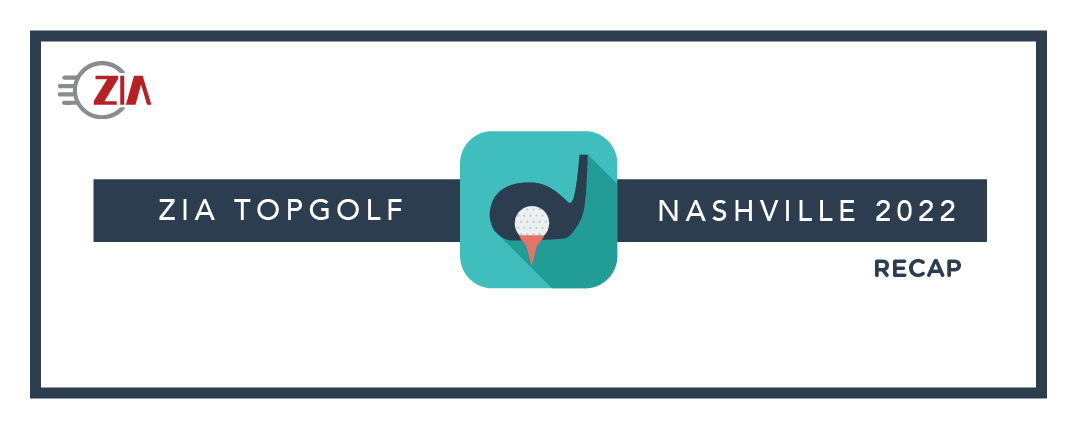This past month, I joined the amazing team of Zia Consulting and Rocket Software colleagues at TopGolf in Nashville, Tennessee, to talk about Hyperautomation. The audience consisted of both prospective and existing customers. Aside from being a fun venue to enjoy social time with catered food and drink, we gave a short presentation. Matt Vanore from Zia Consulting emceed an expert panel with myself and Rocket Software colleague, Kevin Bender. After a brief introduction of who we are and why we were there, we jumped right into the meat of the discussion.
Of course we talked about the industry analyst definition of Hyperautomation. According to Gartner, this is a business-driven, disciplined approach that organizations use to rapidly identify, vet, and automate business and IT processes. I joked that this concept has in fact been real for some time and something our firm has done for the past 20 years. Interestingly, our first project as a firm brought a manual order process online, literally automating the order taking process and saving our client significant sums of money. We were able to reduce their processing time from approximately 30 days to a few minutes. Of course, we didn’t call it hyperautomation back then.
Another time, I had the opportunity to visit a client on site. I noticed that the cubicles near the meeting room had desks filled with no fewer than 3 monitors. It was obvious that in order to do their jobs, each system had to be displayed on a unique screen. I recall asking if there was an opportunity to integrate that experience for the user, potentially into a “single pane of glass” user interface. This is a prime example of when Zia would support a client with hyperautomation. Granted, this effort may be non-trivial but it certainly fits within the boundaries of the idea.
The story is more compelling now than ever before. Organizations globally are pursuing the strategy of hyperautomation to great success. Below is a visual diagram of how Zia Consulting approaches hyperautomation.
During the panel discussion, I talked about the 6 components of Hyperautomation. While they may seem inherently obvious, they tell a powerful story when combined. Each of these plays a pivotal role in the success of an organization’s strategy, from modernizing systems (i.e., upgrading to the latest versions of your enterprise software) to integrating disparate systems to automate governance and compliance. Reach out to us to learn more about our process and how it applies to your organization.
Later in the presentation I spoke about our process flow in the world of Hyperautomation. The diagram shows a lifecycle of information within an enterprise.
There are numerous opportunities to apply the components of hyperautomation in this lifecycle. Oftentimes enterprises employ the use of a process engine through a workflow to facilitate Hyperautomation. Don’t let this fool you, you can still achieve the small, quick wins that are the backbone of the strategy. The most important thing is to take action. Fail quickly and learn from the experience.
You can read more about hyperautomation here. If you’d like to learn more and hear about our 20 years of experience implementing hyperauotmation solutions for our customers, please reach out. I’d be glad to speak with you.

ABOUT THE AUTHOR
Ryan McVeigh, Managing Partner
Ryan has 20+ years of experience in Enterprise Content Management, with a focus on excellence in leadership. He is a proven executive and leader at Zia who prioritizes mentoring and technical knowledge in all aspects of his business relationships. Ryan is an expert in content management strategy, with many years under his belt in managing development teams, services delivery, business development, and sales. Ryan is passionate about building successful partnerships with employees, customers, and businesses alike. In his time off, he enjoys skiing and exploring Colorado’s wilderness.



